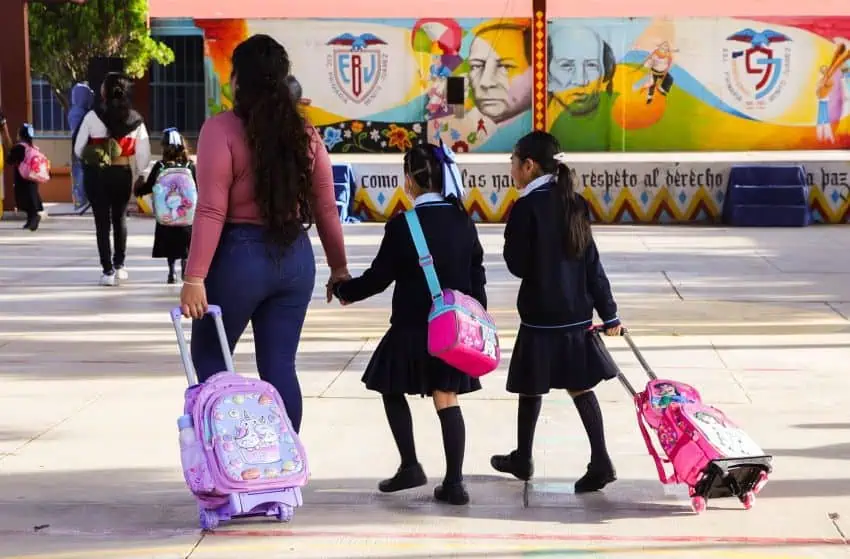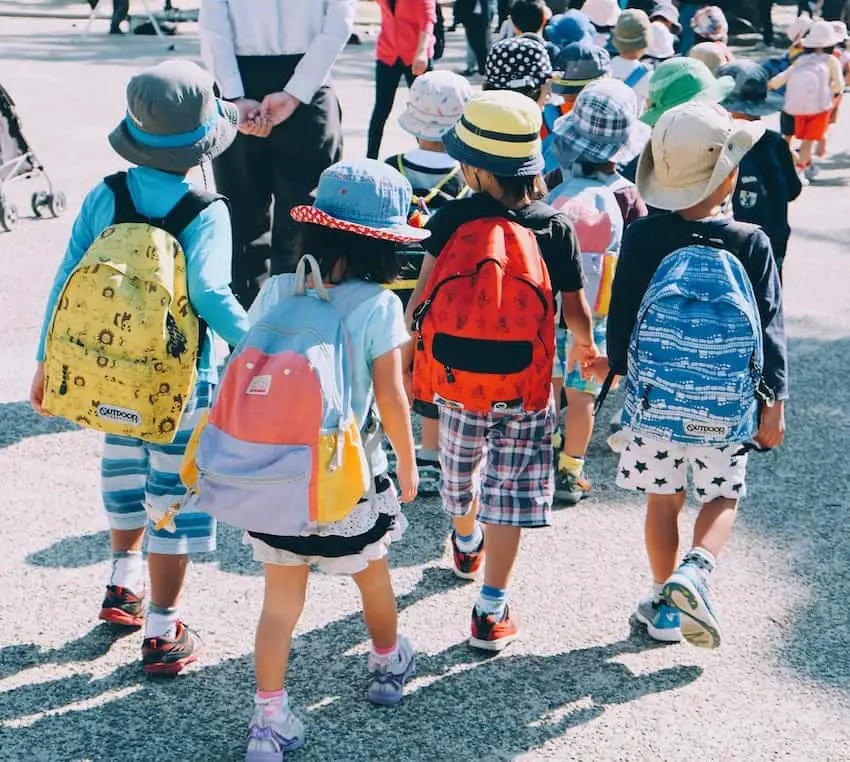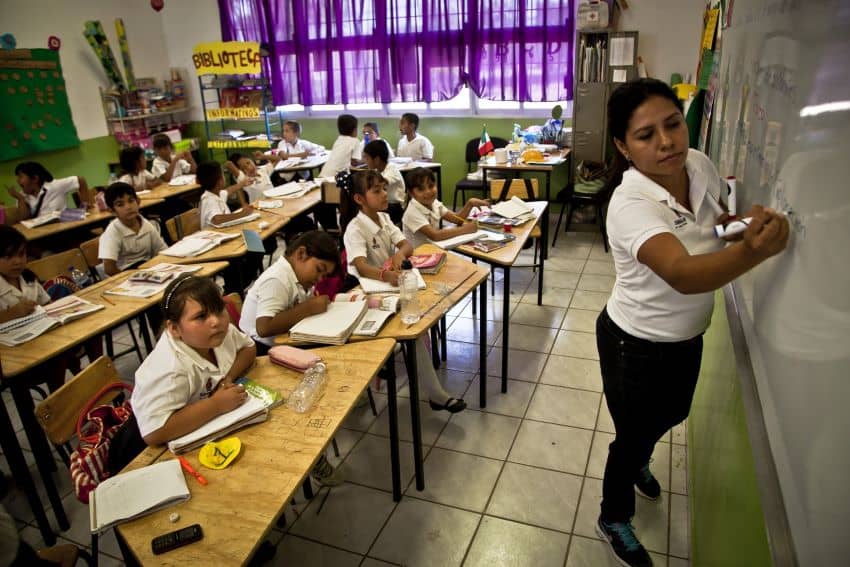Back to school in Mexico; How many students are enrolled in 2024?

More than 24 million students at the basic level — including preschool, primary and secondary school — went back to school in Mexico on Aug. 26.
During President Andrés Manuel López Obrador’s morning press conference, Education Minister (SEP) Leticia Ramírez Amaya wished the students “a great school year,” and encouraged pupils “to socialize, to be with their friends, to learn in an atmosphere of joy and happiness.”

According to the school calendar, the new school cycle runs from Aug. 26, 2024 to July 16, 2025.
How many students attend public versus private schools?
In Mexico, the majority of students attend public schools, with around 21 million enrolled in public primary and secondary schools in 2024.
In contrast, just over 2 million students attend private schools.
How have school costs increased this year?
Parents of students must pay for school supplies and uniforms as well as tuition and re-enrollment fees, all of which have risen in cost due to inflation. According to a study by the newspaper El Economista, the education sector saw an annual inflation rate of 5.24% in the first half of August 2024.
The study found that in Mexico City, the average cost of primary school supplies could range between 1,500 and 2,500 pesos (US $76 and $127). Meanwhile, the price of school supplies for secondary school ranges between 2,000 and 3,000 pesos (US $101 and $152).
These estimates do not consider tuition fees for private schools, uniforms or textbooks (in private schools, additional books are used in addition to those universally provided by the SEP).
Considering all expenses associated with the new school year, the National Alliance of Small Business Owners (ANPEC) reported that the return to school for each student will cost an average of 9,689 pesos (US $492).


How many public schools lack basic infrastructure?
According to Aprender Parejo, a study conducted by Tecnológico de Monterrey (TEC), four out of 10 public schools (offering basic education) lack one of the following essential services: drinking water, electricity, sinks or private toilets.
Sixty-five out of 100 schools (offering basic education) lack an internet connection or computers.
The report reveals that between 2013 and 2024, Mexico spent 451.2 million pesos (US $22.9 billion) on educational infrastructure. Of this figure, 70.2% was allocated to basic education facilities, 7.7% to upper secondary education and 22.1% to higher education. However, it is not clear where and what types of investments were made in public schools.
“It’s not about making the school pretty, it’s about making it a decent space for learning,” the lead researcher of Aprender Parejo Marco Fernández stressed.
In contrast, only 8% of private schools lack essential services.
Is there an educational deficit in Mexico?
According to data from the National Council for the Evaluation of Social Development Policy (Coneval), 19.2% of Mexico’s population, which represents 24.4 million people, have an educational deficit, meaning their educational outcome is lower than what the curriculum intends.
According to the latest data, the educational gap increased from 19.0% to 19.2% between 2018 and 2020.
The Coneval said that the entities with the lowest rates of educational deficit are Mexico City (9.5%), México state (14.1%) and Coahuila (14.3%). Meanwhile, the states with the greatest rates of educational deficit include Chiapas (32.5%), Oaxaca (29.6%) and Michoacán (29.4%).
Moreover, according to an academic study by the Organization for Economic Cooperation and Development (OECD), Mexico ranks 51st overall for its combined scores in math, reading and science, meaning that Mexican students are falling behind their global counterparts in those subjects.
With reports from Animal Político, El Economista, Expansión and Líder Empresarial
Source: Mexico News Daily

